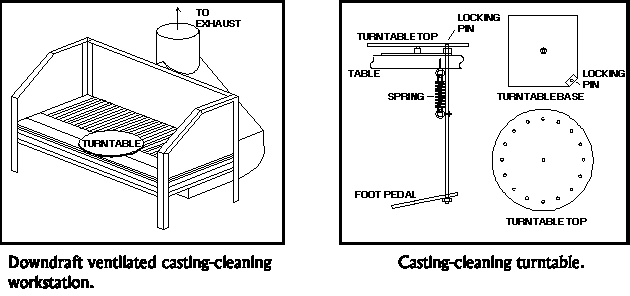
HC23
![]()
Exposure to respirable silica dust can lead to the development of silicosis, a debilitating and potentially deadly lung disease. In foundry operations, workers who clean small castings made from sand molds use various handheld chipping and grinding tools. If dust exposures are not adequately controlled, workers breathe in high concentrations of respirable silica.
![]()
Studies conducted by the National Institute for Occupational Safety and Health (NIOSH) have shown that excessive concentrations of respirable silica are produced when cleaning castings made from sand molds. Use of the local exhaust ventilation (LEV) system described below significantly reduced worker exposures to respirable dust by 59% to 77% for various cleaning tools. This system may keep worker exposures to respirable silica below permissible limits and eliminate the need for workers to wear respirators.

To obtain more free information about controlling this hazard or about other occupational safety and health issues:
| — call NIOSH* at 1-800-35-NIOSH (1-800-356-4674), or — visit the NIOSH Homepage on the World Wide Web at |
A technical report has been published: An evaluation of a local exhaust ventilation control system for a foundry casting-cleaning operation, Am Ind Hyg Assoc J (58): 354-358 (1997).
The principal contributors to this publication are Michael G. Gressel, Rosmarie T. Hagedorn, and Jerome P. Flesch.
| This document is in the public domain and may be freely copied or reprinted. NIOSH encourages all readers of this HAZARD CONTROLS to make it available to all interested employers and workers. |